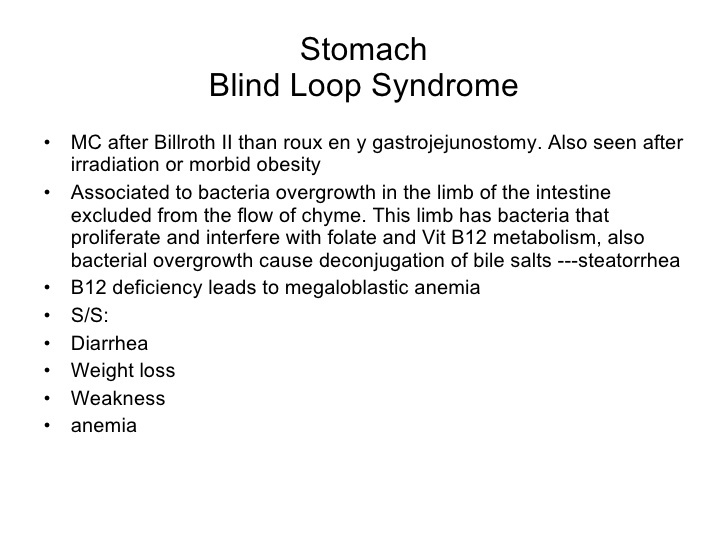Blind Loop Syndrome Causes, Symptoms, Diagnosis and Treatment

What Is Blind Loop Syndrome?
Blind loop syndrome (BLS) commonly referred to in the literature as small intestinal bacterial overgrowth (SIBO) or bacterial overgrowth syndrome (BOS), is a state that occurs when the normal bacterial flora of the small intestine proliferates to numbers that cause significant derangement to the normal physiological processes of digestion and absorption.
The problem of BLS arises when the bacterial colonies residing in the upper gastrointestinal tract begin to grow out of control or are altered in their makeup thereby creating a burden on the normal physiological processes occurring in the small intestine.
This results in problems inclusive of but not restricted to vitamin B12 deficiency, fat malabsorption and steatorrhea, fat-soluble vitamin deficiencies and intestinal wall injury.
A Blind Loop Can Cause Complications, Including:
- Poor absorption of fats
- Damage to the intestinal lining
- Vitamin B-12 deficiency
- Brittle bones (osteoporosis)
- Kidney stones
Causes Of Blind Loop Syndrome:
Blind loop syndrome can be caused by:
- Complications of abdominal surgery, including gastric bypass for obesity and gastrectomy to treat peptic ulcers and stomach cancer
- Structural problems in and around your small intestine including scar tissue (intestinal adhesions) on the outside of the bowel and small, bulging pouches of tissue that protrude through the intestinal wall (diverticulosis)
- Certain medical conditions, including Crohn’s disease, radiation enteritis, scleroderma, celiac disease, obesity and diabetes, can slow movement (motility) of food and waste products through the small intestine
The Following Factors Increase The Probability Of Developing Blind Loop Syndrome:
- Gastric surgery for obesity or ulcers
- A structural defect in the small intestine
- An injury to the small intestine
- An abnormal passageway (fistula) between two segments of bowel
- Crohn’s disease, intestinal lymphoma or scleroderma involving the small intestine
- History of radiation therapy to the abdomen
- Diabetes
- Diverticulosis of the small intestine
Symptoms Of Blind Loop Syndrome:
Signs and symptoms of blind loop syndrome include:
- Loss of appetite
- Nausea
- Flatulence
- Diarrhea
- Fullness after a meal
- Fatty stools (steatorrhea)
- Unintentional weight loss
- Generalised weakness
Diagnosis Of Blind Loop Syndrome:
The following tests help in diagnosing blind loop syndrome:
- Abdominal X-ray
- Abdominal CT scan
- Barium X-ray of the small intestine, which may reveal a blind loop, diverticulosis, a narrowing (stricture) of the intestine or other structural problems, as well as slow transit times that can cause bacterial overgrowth.
- CT enterography, which helps detect inflammation or structural problems in the bowel and abnormalities in other organs, such as the pancreas.
- Hydrogen breath test, which measures the amount of hydrogen that one, breathes out after drinking a mixture of glucose and water.
- D-xylose breath test, which, measures the amount of carbon dioxide in the breath.
- Bile acid breath test.
- Quantitative fecal fat test, to determine how well small intestine absorbs fat.
- Small intestine aspirate and fluid culture.
Treatment Of Blind Loop Syndrome:
The following treatment options are available:
- Antibiotic therapy
- Nutritional support
Nutritional supplements
Lactose free diet
Medium-chain triglycerides
By : Natural Health News




